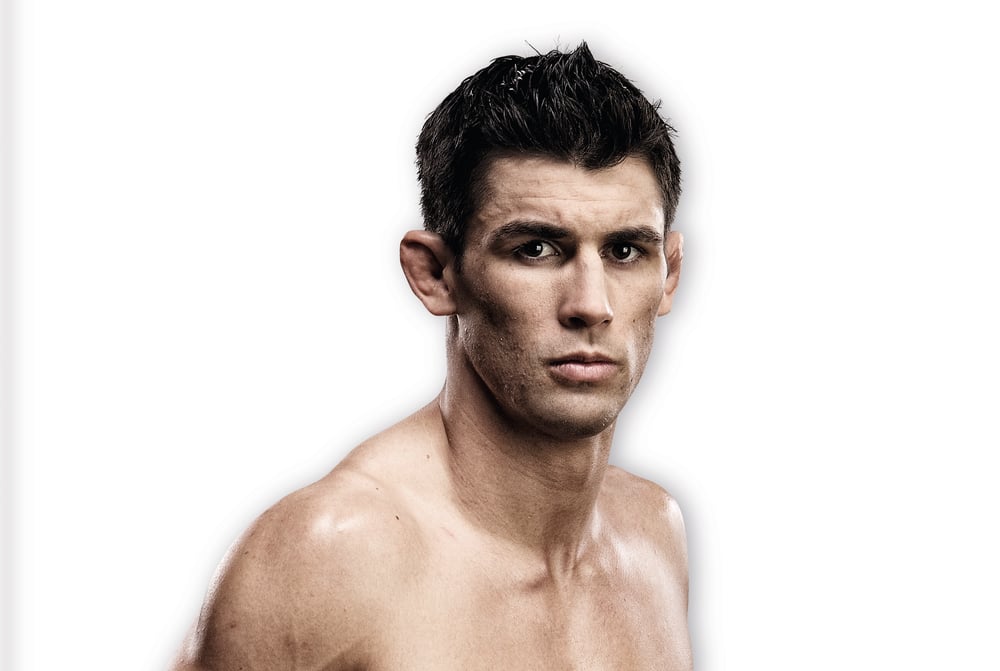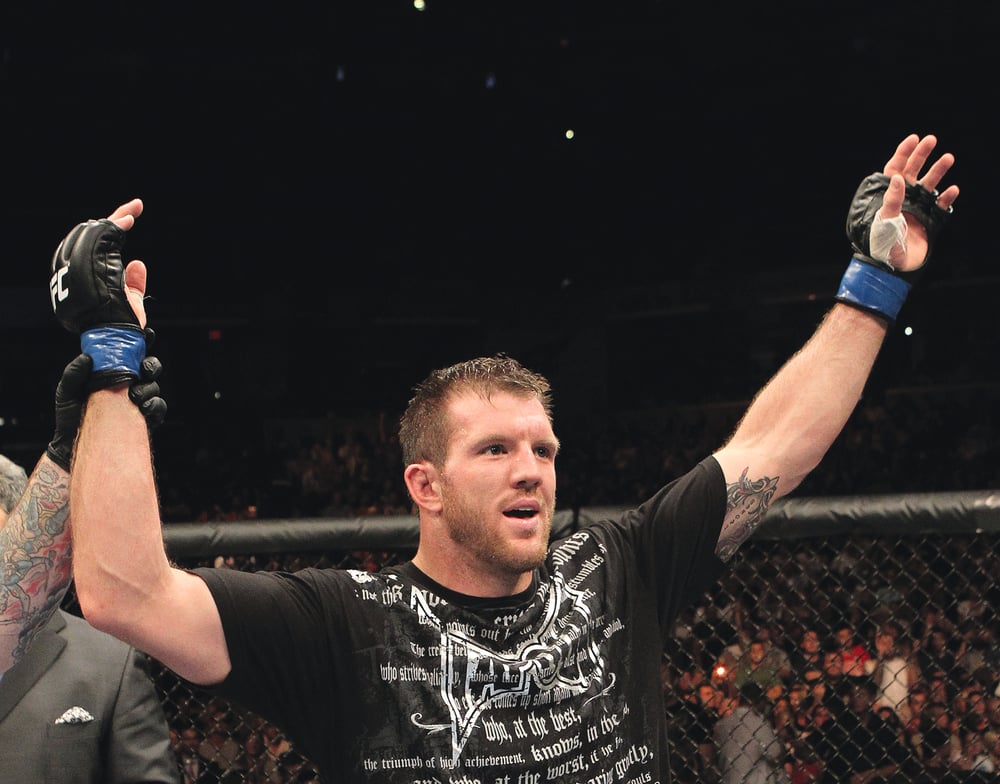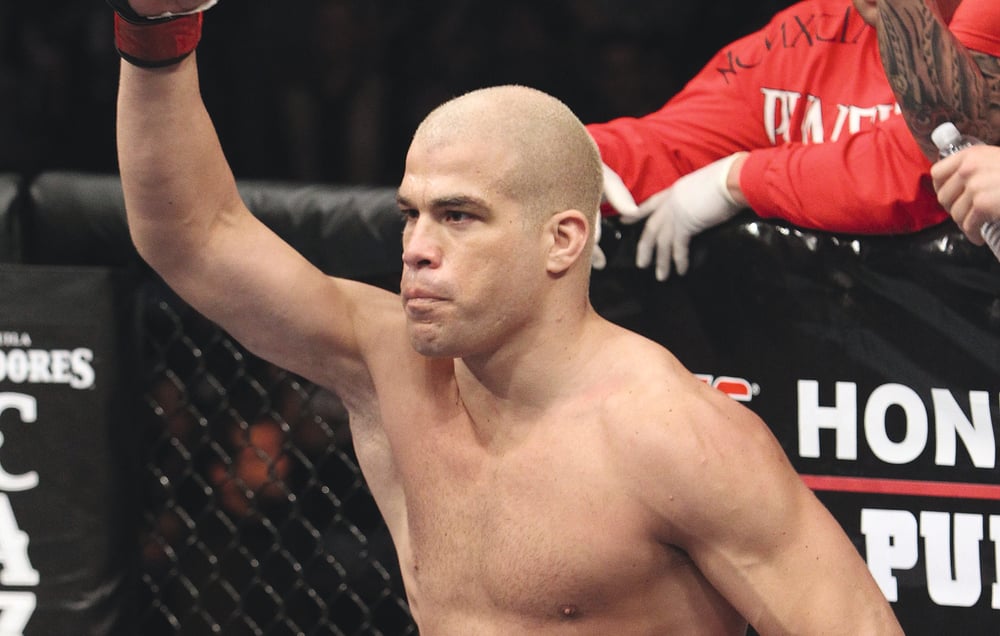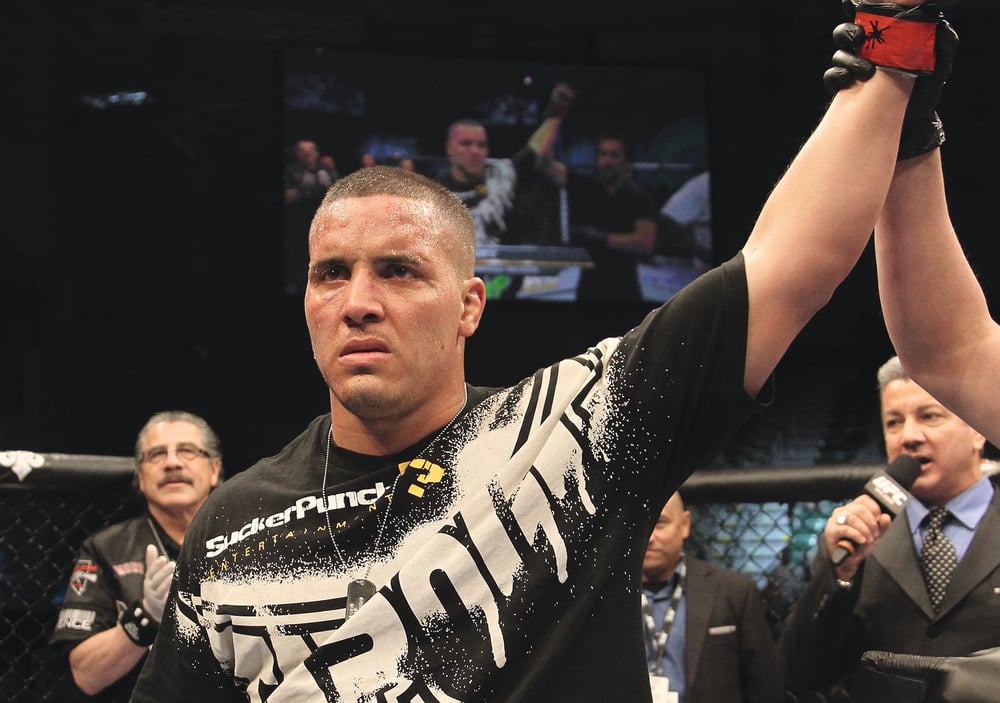
Issue 077
July 2011
FO’s experts and statisticians analyze three upcoming bouts.
First, FO analyst Andrew Garvey takes a look at the state of play: what are the career implications for the combatants? Where are they coming from, and what will victory or defeat hold? Next, our technical advisor Pete Irving breaks down the athletic considerations.
URIJAH FABER (25 - 4 - 0) VS. DOMINICK CRUZ (17 - 1 - 0)
UFC 132
July 2nd 2011, MGM Grand, Las Vegas
THE BIGGER PICTURE
In March 2007, Urijah Faber caught young Dominick Cruz with a guillotine choke in under two minutes, successfully defending his WEC featherweight championship. Dropping to bantamweight and continually improving as a striker (amazingly, he never really had any boxing training until his early 20s) Cruz embarked on an eight-fight winning streak, beating quality fighters like Faber’s close friend Joseph Benavidez (twice), Brian Bowles and Scott Jorgenson. Now Cruz (17-1) makes the first defense of the unified WEC/UFC bantamweight title he won beating Jorgenson for seemingly every second of their five-rounder with his speedy, in-out striking style. At 25, Cruz has plenty of time to refine his skills but, as the owner of perhaps the most distinctively elusive, sharp and reflex-based style in the entire sport, will almost certainly have to radically change his style as he gets older and slows down. But that remains some way off. Right now, Cruz will happily bounce around like a hyperactive toddler, pestering his opponents with stinging shots before darting out of range again. It’s no surprise he hasn’t genuinely stopped anyone (Brian Bowles injured his hand in losing the WEC title to Cruz last March) since early 2008. As defensively brilliant as Cruz is, however, he faces an uphill battle pulling in the kind of fan adoration that comes so naturally to Faber.

Undoubtedly the biggest star in WEC history, 32-year-old Faber (25-4) made a winning UFC debut in March, outscoring the underrated Eddie Wineland. But the all-action, ever-creative ’California Kid’ may be about to achieve his greatest stardom at the tail end of his athletic prime. Prior to the Wineland success, and his very impressive submission finish of Takeya Mizugaki, Faber had lost three of five fights. Jose Aldo dominated him with punishing leg kicks in a fight where only Faber’s courage saw him last the distance and Mike Brown beat him twice, by first round stoppage and in their dramatic five-round rematch. Faber looked unstoppable in 2007, and for most of 2008, until his unorthodox style backfired when Brown took advantage of a missed spinning elbow and pounded him into the mat. Still a very dangerous, and possibly rejuvenated fighter since dropping to bantamweight, Faber may nonetheless struggle with a faster, younger opponent. Over the last few months, their very public rivalry has intensified with words and challenges exchanged at cageside. The fight itself should be good as Faber rarely disappoints and Cruz, if nothing else, is constantly in motion. It’s speed and movement that should make the difference in a fight very likely to go the distance with Cruz emerging victorious.
TECHNICAL BREAKDOWN
With his curious footwork, low hands and wide-open guard, were it not for the fact that he finds himself winning against top flight opposition, Cruz would appear to be a raw novice. The champion seems to be a believer in the old adage, “the best defense is a good offense,” as he swings wildly with wide hooks and leans back on the left body kick, seemingly paying no heed to his own protection. Considering the degree to which he over-commits his punches and kicks, he is very fast on the sprawl.
In five rounds of a losing effort against Jose Aldo at WEC 48, Faber absorbed 77 significant strikes, while in as many rounds at WEC 53 Cruz tenderized Scott Jorgensen with 117 significant hits
On the back foot Cruz defends himself in the same manner as he attacks, with wild head and body movement, as he sacrifices his stance to execute wild slip and roll maneuvers. Cruz switches between orthodox and southpaw regularly, often by standing square on or narrowing his stance in an intermediate step. Where this should leave him vulnerable to straight shots, Cruz seems to anticipate this and counter well thanks to his not inconsiderable height and reach. Not much in Cruz’s arsenal is what one would consider to be technically correct, including his highly effective double-leg, which often amounts to no more than a head-down charge. It is, however, this very unorthodox approach that is the key to his success; that, coupled with an incredible intensity that his opponents struggle to match.
Faber himself built his name with a high-octane style, outworking his opponents and beating them in the scrambles, breaking rules by leading with the overhand right and stepping back with his hands dropped low. Faber’s style though, is far more pleasing for the educated fight fan, with some genuinely solid wrestling skill, inescapable submissions and hard-hitting Thai boxing to back up his unorthodox antics. Cruz, on the other hand, although he is undeniably effective and may thrill the crowd, looks like a street fighter who knows a double-leg.
Where Faber has the definitive advantage is in submission skill. As Faber himself astutely pointed out, Cruz has a history of winning decisions – Faber has a history of finishing fights. More often than not those finishes are thanks to the ‘California Kid’s vise-like chokes from the back, or the guillotine – the hold that handed Cruz his one and only loss way back in 2007.
30%
Cruz has successfully defended 84% of takedowns in the WEC, while Urijah Faber only has a 30% success rate when trying to get the fight to the mat.
62%
The percentage of Urijah Faber fights that have been for any kind of belt.
7
Cruz is on a seven-fight win streak, which includes two defenses of his bantamweight belt.
27%*
During his eight WEC fights, Cruz has thrown 1,486 strikes but connected with only 27% of them.
TITO ORTIZ (15-8-1) VS. RYAN BADER (12-1-0)
UFC 132
July 2nd, Las Vegas
THE BIGGER PICTURE
A living embodiment of the theory that casual fan appeal has little to do with success inside the cage, the 36-year-old Ortiz (15-8-1) hasn’t won a fight since October 2006. There, he obliterated old enemy Ken Shamrock in one of the most one-sided scraps since the British won the 1896 Anglo-Zanzibar War in under 45 minutes. Post-Shamrock, Ortiz has gone 0-4-1 and seen his injury problems become one of the sport’s longest running sagas. A former cardio machine, Ortiz can still perform credibly in spurts, at least until running out of gas. He came close to submitting Lyoto Machida, drew with Rashad Evans and managed to convince some he’d done enough to outpoint Forrest Griffin. But his loss to Matt Hamill best displays where he stands in 2011. ‘Darth’ Bader (12-1) was taken apart and submitted by title-bound Jon Jones at UFC 126, losing for the first time in his career. Far more successful as a collegiate wrestler, Bader has a clear edge in Tito’s speciality. He’s also much younger, 28 come fight day, has a hefty punch, and doesn’t carry the injury baggage of a long fighting career. Look for Bader, the better fighter, to consistently punish Tito in the same workmanlike way he beat ‘Little Nog’ and Keith Jardine.

TECHNICAL BREAKDOWN
Although in today’s UFC, Ortiz’s classic strategy of takedown, bull into the fence and ground ‘n’ pound may seem bog standard, it is important to remember that Ortiz was the one who mapped out the blueprint for the wrestler’s gameplan and skill-set in MMA. Bader himself is in fact one of the followers in Ortiz’s footsteps, with his powerful double-leg and ground ‘n’ pound with the elbows over the top.
No one in UFC competition has made their opponents miss their strikes more than Bader has. Combined, ‘Darth’s opponents have failed to land 76.1%* of their attempts
Both men are from that college wrestling background, Ortiz often shoots in low on the knee, where Bader often elects to shoot a higher tackle, finishing equally well with the head on the near side, or further outside the trail leg. Ortiz’s wrestling has looked steadily less formidable as standards have risen and Ortiz has aged. Bader, on the other hand, is in his prime and has taken all his opponents down easily, barring the phenomenally talented Jon Jones.
Ortiz may not be the most heavy-handed light heavyweight around, but has successfully developed a tidy kickboxing style. Tito moves well and puts together good hands and kick combinations, especially for such a heavily-muscled man. Bader has yet to find that comfortable style when striking, but wins out on raw power with his wild but dangerous overhand right. Bader’s guard is unsure and he generally steps back out of range rather than blocking or parrying. He wisely elects to keep both feet on the ground most of the time, but when he does throw kicks he sticks to a basic right leg low-point and the results are less than spectacular.
122*
In his UFC career, Tito Ortiz has attempted a massive 122 takedowns.
8th*
Ortiz is ranked 8th amongst fighters for total strikes landed in UFC fights. ‘The Huntington Beach Bad Boy’ has hit his UFC foes 1,185 times.
13
Ryan Bader was 13 years old when Tito Ortiz had his first MMA fight in 1997, ironically, at UFC 13.
49%*
Nearly half of Tito Ortiz’s strikes have landed during ground ‘n’ pound.
PAT BARRY (6-2-0) VS. CHEICK CONGO (15-6-2)
UFC Live 4
June 26th, Pittsburgh
THE BIGGER PICTURE
A fight that seems destined to offer quality stand-up action, good-natured powerhouse Barry (6-2) will be giving up five inches in height and plenty of experience to the six-foot-four Kongo (15-6-2). Both have won armfuls of titles in kickboxing and are armed with viciously effective leg kicks. Barry’s fast, focused attack on his unfortunate opponents’ lower limbs has earned three stoppage wins and helped him to his only decision victory when he brutalized Joey Beltran’s legs in January. His grappling clearly needs work but on his feet, Barry is extremely dangerous. After a few years on the Dutch MMA scene, Kongo signed a UFC deal five years ago and has gone 8-4-1 in the Octagon. With the organization longer than any current heavyweight beside Frank Mir, Kongo is coming off a disappointing draw at UFC 120 with American prospect Travis Browne. The Frenchman will have a clear reach advantage, but he hasn’t looked good in his last three fights and his decade-long career is probably winding down while Barry – if he continues to improve and diversify – should have a very interesting few years ahead of him.

TECHNICAL BREAKDOWN
On opposite ends of the scale in terms of height and reach, Barry stands at just five-foot-eleven and Kongo at six-foot-four. Barry still has no problem headkicking up to his invariably taller opposition, with excellent flexibility considering his heavy frame. The tall and lean Kongo also loves to kick and is highly effective with his clinch and knee technique, which he normally delivers to the body. With the pronounced difference in stature, the Frenchman’s knees will be easily lined up with Barry’s face.
Barry has ended three of his MMA fights, or exactly half of his wins, by TKO due to leg strikes
Both men have come from Thai/kickboxing backgrounds and have both suffered from an underdeveloped ground game for UFC level competition. Kongo’s only submission wins (barring the submission to strikes vs Buentello) came early in his career against lower-level opposition. Kongo suffers beneath the pin, once he has been outwrestled he struggles to recover a dominant position. What he does do well is strike from top position; thanks to his long reach he throws down punches inside the guard with minimal risk of falling into a submission. His wall takedowns are actually surprisingly good for a ‘non-wrestler’, as he exploits his long reach to grip up the double-under beneath the butt.
With three common opponents, both men hold wins over Dan Evensen and Antoni Hardonk. Kongo defeated Mirko Filipovic back in 2007, but Barry fell foul of ‘Cro Cop’ in his last outing at UFC – Fight for the Troops 2.
0
Across 25 kickboxing bouts and eight MMA fights, Pat Barry has never been stopped due to strikes. His combined eight losses are either via decision, submission or cut stoppage.
11.5
Combined, Kongo has an 11.5-inch advantage over Barry: six-and-a-half inches in reach, and five inches in height.
61.3%*
Kongo has a significant strike accuracy of 61.3%, the second best of all UFC fighters. Only Anderson Silva is more accurate at 68.3%.
94%*
A massive 94% of Pat Barry’s UFC strikes have come during the stand-up.
*Figures courtesy of FightMetric
...











